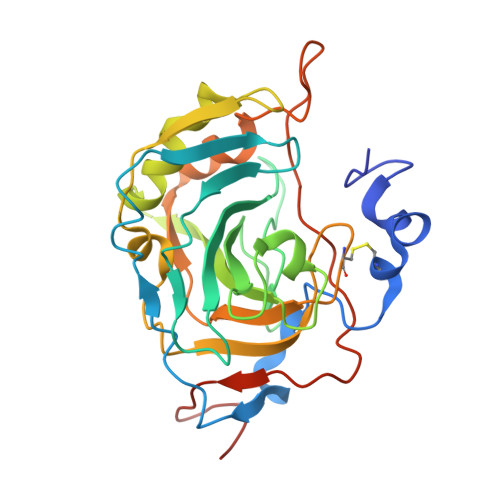Discovery of 1,1'-Biphenyl-4-sulfonamides as a New Class of Potent and Selective Carbonic Anhydrase XIV Inhibitors.
La Regina, G., Coluccia, A., Famiglini, V., Pelliccia, S., Monti, L., Vullo, D., Nuti, E., Alterio, V., De Simone, G., Monti, S.M., Pan, P., Parkkila, S., Supuran, C.T., Rossello, A., Silvestri, R.(2015) J Med Chem 58: 8564-8572
- PubMed: 26497049
- DOI: https://doi.org/10.1021/acs.jmedchem.5b01144
- Primary Citation of Related Structures:
5CJF, 5E2R - PubMed Abstract:
New 1,1'-biphenylsulfonamides were synthesized and evaluated as inhibitors of the ubiquitous human carbonic anhydrase isoforms I, II, IX, XII, and XIV using acetazolamide (AAZ) as reference compound. The sulfonamides 1-21 inhibited all the isoforms, with Ki values in the nanomolar range of concentration, and were superior to AAZ against all of them. X-ray crystallography and molecular modeling studies on the adducts that compound 20, the most potent hCA XIV inhibitor of the series (Ki = 0.26 nM), formed with the five hCAs, provided insight into the molecular determinants responsible for the high affinity of this molecule toward the target enzymes. The results pave the way to the development of 1.1'-biphenylsulfonamides as a new class of highy potent hCA XIV inhibitors.
Organizational Affiliation:
Istituto Pasteur Italia-Fondazione Cenci Bolognetti, Dipartimento di Chimica e Tecnologie del Farmaco, Sapienza Università di Roma , Piazzale Aldo Moro 5, I-00185 Roma, Italy.



















